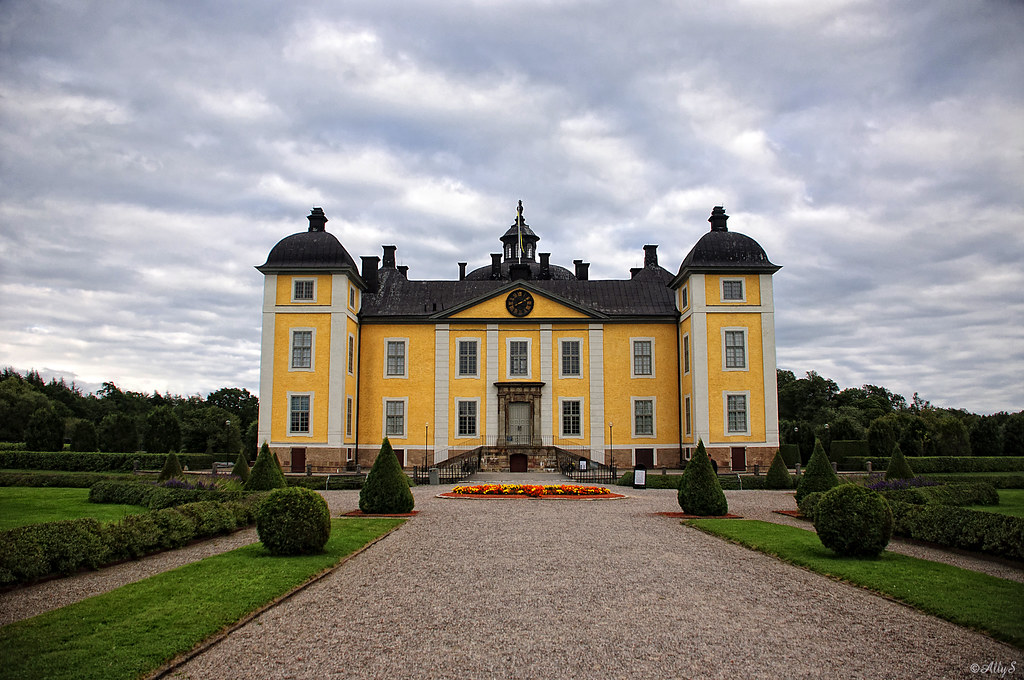Most beautiful palaces in Sweden
Sweden became an ruling empire of Baltic Sea in the 17th century. As a result Sweden has many beautiful palaces built in the late Renaissance and Baroque style. Here are some gems built by the nobility of Swedish Empire.

Royal Palace
The Stockholm Palace (Kungliga Slottet) is the official residence and major royal palace of the Swedish monarch. The offices of the monarch and the other members of the Swedish Royal Family as well as the offices of the Royal Court of Sweden are located there.
Read more about Royal Palace
Drottningholm Palace
The Drottningholm Palace is the private residence of the Swedish royal family. It was originally built in the late 16th century. It served as a residence of the Swedish royal court for most of the 18th century. Apart from being the private residence of the Swedish royal family, the palace is a popular tourist attraction.
Read more about Drottningholm Palace
Gustav III's Pavilion
Gustav III's Pavilion is a royal pavilion at the Haga Park. As a highlight in Swedish art history, the Pavilion is a fine example of the European neoclassicism of the late 18th century in Northern Europe.
Read more about Gustav III's Pavilion
Tyresö Palace
The construction of the Tyresö palace began in the 1620s by the Riksdrots Gabriel Oxenstierna and completed in 1636.
Read more about Tyresö Palace
Skokloster Castle
Skokloster Castle was built in the Baroque style between 1654 and 1676 by the wealthy military commander and count Carl Gustaf Wrangel. The castle was designed by architect Nicodemus Tessin the Elder. When Wrangel died, the castle passed into the hands of the Brahe family, and then, after 1930, became the property of the von Essens.
Read more about Skokloster Castle
Rosersberg Palace
Rosersberg Palace is one of the Royal Palaces of Sweden. It was built in the 1630s by the Oxenstierna family and became a royal palace in 1762, when the state gave it to Duke Karl (later Karl XIII), the younger brother of Gustav III of Sweden. Gabriel Bengtsson Oxenstierna named the palace after his mother who came from the prestigious Tre Rosor ("Three Roses") family.
Read more about Rosersberg Palace
Ulriksdal Palace
Ulriksdal Palace is a royal palace situated on the banks of the Edsviken in the National City Park. It was originally called Jakobsdal after its owner Jacob De la Gardie, who had it built by architect Hans Jacob Kristler in 1643-1645 as a country retreat.
Read more about Ulriksdal Palace
Rosendal Palace
Rosendal Palace (Rosendals slott) is a Swedish royal pavilion located at the Djurgården, an island in central Stockholm. It was built between 1823 and 1827 for King Karl XIV Johan, the first Bernadotte King of Sweden.
Read more about Rosendal Palace
Tullgarn Palace
Tullgarn Palace is a royal summer palace built in the 1720s. The palace offers a mixture of rococo, Gustavian and Victorian styles. The interior design is regarded as one of Sweden\"s finest. In 1719, the old Renaissance castle from the late 16th century was demolished.
Read more about Tullgarn Palace
Strömsholm Palace
Strömsholm Palace, sometimes called Strömsholm Castle is a Swedish royal palace. The baroque palace is built on the site of a fortress from the 1550s, located on an island in the Kolbäcksån river at the west end of Lake Mälaren.
Read more about Strömsholm Palace
Ekenäs Castle
The present Ekenäs castle was built in the 17th century on top of the foundations of a medieval fortress from the 14th century. Ekenäs is one of the best preserved renaissance castles in Sweden with its three impressive shingled towers. Its military character is clearly shown by the surrounding moat and its situation on a cliff on the shore of a lake which has since been drained.
Read more about Ekenäs Castle
Örbyhus Castle
Örbyhus estate existed already in the 14th century, but the first castle was built by John Kristiernsson (Vasa) around then year 1450. It was a strong fortification with tower. Örbyhus remained in a possession of royal Vasa family until the end of 16th century.
Read more about Örbyhus Castle